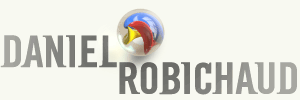Titanic: Deep Inside Digital Domain
softimage.com
January 1998
After deciding to re-make the epic disaster film, Titanic, one of the first solutions that James Cameron looked into was to have a replica of the Titanic built at the Gdansk Shipyard. When he received an estimate of $25 million, he thought that seemed a bit much - at the time. When this was coupled with the fact that it would be virtually impossible to cover the ship with stunt people, break it in half and then sink it, Cameron came to the realization that to achieve what he envisioned, he was going to have to delve pretty deeply into the world of digital effects. He turned to Digital Domain - and it was here that Titanic was able to reach Cameron's renowned epic proportions.
Digital Domain's task was to create enough CG characters to populate the ship in such a way that the audience wouldn't be aware of all the repetitions happening on the computer. This feat was accomplished with a library of approximately 37 motion capture characters that were slightly altered, and re-used in roughly 200 specific vignettes, such as people talking, standing, gesturing and smoking, throughout the movie.
The crew at Digital Domain also developed a new technique combining the use of motion capture with traditional keyframe animation that they called Roto Capture. Daniel Robichaud, Animation Supervisor, explains: "This basically consists of using the digital motion capture data as a frame-by-frame guide for animators to animate on top of. They could use this 3D moving stick figure that resulted from the motion capture, as a visual guide for animation posing, which is really what animation is about: how weight and balance is distributed when a character is moving. The animators could use this data in a much less restrictive way than they would with traditional motion capture. They could decide for themselves where to put their keyframes. Then they could easily change the motion if required. This helped them feel and be much more creative."
